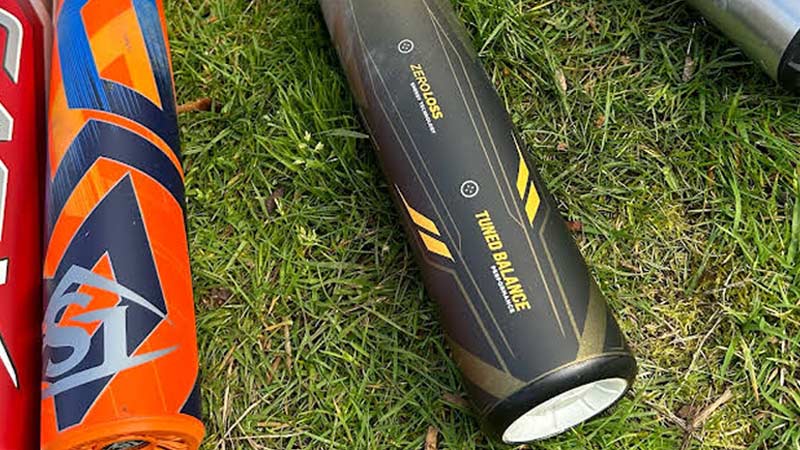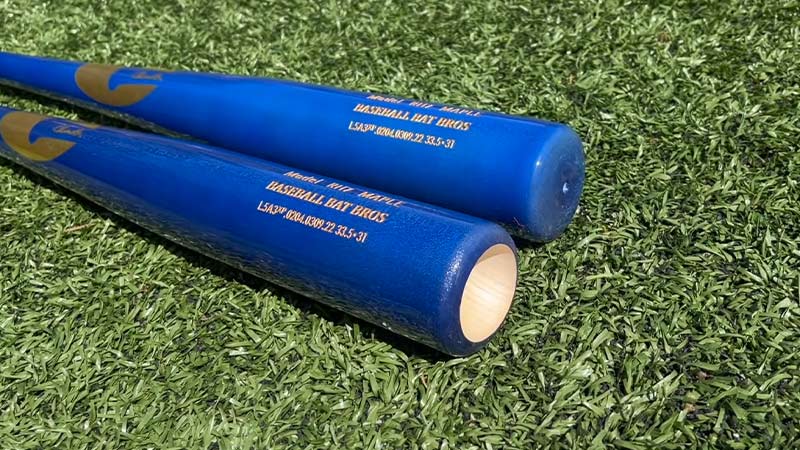Baseball bats are iconic symbols of America’s favorite pastime. While they come in various shapes and sizes, you may have noticed that many baseball bats have a hole in the end. Have you ever wondered why?
In this article, we will delve into the reasons behind the presence of a hole at the end of a baseball bat and explore the impact it has on the bat’s performance. So, stay calm and go through the whole article attentively.
Do All Baseball Bats Have a Hole in The End?
While not all baseball bats have a hole in the end, it is indeed a common feature found in many bats, especially those used in professional leagues and high-level competitions.
The decision to include a hole at the end of a baseball bat depends on various factors, such as player preference, league regulations, and the specific requirements of the game.
In professional baseball, where players strive for optimal performance, the presence of a hole at the end of the bat can offer distinct advantages. Many professional players prefer bats with a hole due to the benefits it provides in terms of balance, swing speed, and hit distance.
However, it is worth noting that the use of a hole in amateur leagues or recreational play may vary, and some bats may not feature this design element.
The hole at the end of a baseball bat serves as a design enhancement that can significantly impact a player’s performance. It is carefully positioned to achieve specific objectives, such as improving the bat’s balance, increasing swing speed, and maximizing hit distance.
By redistributing the weight of the bat and reducing its overall mass, the hole enables players to achieve greater control, generate higher bat speeds, and deliver powerful hits.
Although not all baseball bats incorporate a hole, their prevalence among professional players attests to their effectiveness.
The inclusion or omission of a hole at the end of a baseball bat ultimately depends on individual player preference, league regulations, and the desired performance characteristics sought by the players.
Why is There a Hole in the End of a Baseball Bat?
The presence of a hole at the end of a baseball bat serves several crucial purposes that can greatly impact a player’s performance on the field.
Better Balance
The hole at the end of a baseball bat plays a significant role in improving its balance. By removing some material from the barrel end, the weight distribution of the bat is altered, resulting in a more evenly balanced bat.
This improved balance allows players to have better control and maneuverability when swinging the bat. It enables them to maintain a smooth and controlled swing, enhancing their ability to make accurate contact with the ball.
Increased Swing Speed
One of the primary advantages of having a hole at the end of a baseball bat is the potential for increased swing speed. By reducing the overall weight of the bat, the hole makes it lighter. A lighter bat can be swung with greater speed, allowing players to generate higher bat speeds.
The increased swing speed translates into improved momentum and kinetic energy, leading to enhanced contact with the ball. This can result in more powerful hits and a greater chance of solid contact.
Better Hit Distance

The combination of improved balance and increased swing speed that the hole at the end of a baseball bat provides can contribute to greater hit distance. When a bat is well-balanced and swung with speed, players can make solid contact with the ball.
This optimal contact allows them to transfer maximum energy from the bat to the ball, resulting in longer hits that have the potential to reach the outfield.
The hole in the bat helps players maximize their hitting distance by facilitating an efficient transfer of energy upon contact.
Harder Wood can be Used
In the case of wooden baseball bats, the hole at the end allows for the use of harder and denser wood. By removing a portion of the wood from the end, bat manufacturers can create a lighter bat without compromising its strength or durability.
The use of harder woods provides additional benefits such as increased power and durability. These woods are less prone to denting or cracking upon impact, allowing players to consistently deliver powerful hits.
Vibration Dampening
When a ball strikes a baseball bat, it generates vibrations that can travel through the barrel and handle, potentially causing discomfort and affecting a player’s grip and control. The hole at the end of a baseball bat acts as a vibration-dampening mechanism.
It absorbs a portion of the impact energy, reducing the vibrations transmitted to the player’s hands. This helps players maintain a secure grip on the bat, enhancing their control and reducing the chances of mishits caused by excessive vibrations.
These advantages can significantly enhance a player’s performance at the plate, allowing for more controlled and powerful swings, resulting in solid contact and increased offensive productivity.
Cupped Vs Uncupped Baseball Bat
In addition to the presence of a hole at the end of a baseball bat, it is important to understand the distinction between a cupped and uncupped bat. Cupping refers to the concave indentation created at the barrel end of a wooden bat.
This indentation serves several purposes and can significantly impact a player’s performance on the field.
Weight Distribution
One of the primary advantages of a cupped bat is the improved weight distribution. The cupping process involves removing additional weight from the barrel end of the bat.
This removal shifts the bat’s center of gravity closer to the handle, creating a more balanced feel. By redistributing the weight, players can have better control over their swings, allowing for more precise and consistent contact with the ball.
Larger Hitting Surface
The cupping process also results in a larger hitting surface area at the barrel’s sweet spot. The sweet spot is part of the bat that provides optimal performance and generates maximum power upon contact with the ball.
With a larger sweet spot, players have a higher chance of making solid contact, increasing the likelihood of powerful hits and improved overall performance.
Improved Bat Speed
Similar to the hole at the end of the bat, cupping contributes to increased bat speed. By removing wood from the end of the bat, the overall weight is reduced.
A lighter bat can be swung with greater speed, allowing players to generate higher bat velocities. This increased bat speed can translate into more forceful hits and improved offensive performance.
Decreased Bat Breakage
Cupping can also help prevent bat breakage. When a ball makes contact with the bat, significant forces are exerted on the barrel. The stress concentration at the barrel’s end can make the bat more susceptible to cracking or breaking.
By removing wood from the end, cupping reduces the stress concentration, potentially enhancing the bat’s durability and minimizing the risk of breakage during gameplay.
It’s important to note that while cupping offers these advantages, not all players may prefer a cupped bat. Some players may find that an uncupped bat suits their swing style and personal preference better.
FAQs
Does the hole at the end of a baseball bat affect its durability?
No, the presence of a hole does not significantly affect the bat’s durability. Bats are designed to withstand the forces exerted during gameplay, and the hole is strategically positioned to maintain the bat’s structural integrity.
Do all baseball bat materials have a hole in the end?
The hole is primarily found in wooden bats. Metal and composite bats are typically manufactured without a hole in the end, as their construction and material composition differ from wooden bats.
Are there any regulations regarding the size or depth of the hole in a baseball bat?
Baseball organizations, such as the MLB, have specific regulations regarding bat construction and dimensions. These regulations include guidelines on the size and depth of the hole at the end of a bat to ensure fair play and player safety.
Can a player customize the size or shape of the hole in their bat?
The customization of a bat’s hole is generally not allowed in organized baseball leagues. Bats must adhere to the regulations set forth by the league to maintain fairness and consistency.
Are there any disadvantages to using a cupped or uncupped bat?
The choice between a cupped or uncupped bat depends on a player’s preference and hitting style.
Some players may prefer the feel and balance of a cupped bat, while others may find better results with an uncupped bat. It is a matter of personal preference and experimentation.
Bottom Line
The presence of a hole in the end of a baseball bat serves various purposes, including improving balance, increasing swing speed, enhancing hit distance, allowing for the use of harder wood, and dampening vibrations.
The combination of the hole and cupping can further enhance a bat’s performance by redistributing weight, enlarging the hitting surface, and reducing the chances of bat breakage.
While not all baseball bats have a hole, it has become a common feature in high-level play due to the advantages it offers.
Whether it’s a wooden bat with a hole or a metal bat without one, the design and construction of baseball bats continue to evolve, aiming to maximize player performance and the enjoyment of the game. Best wishes.







